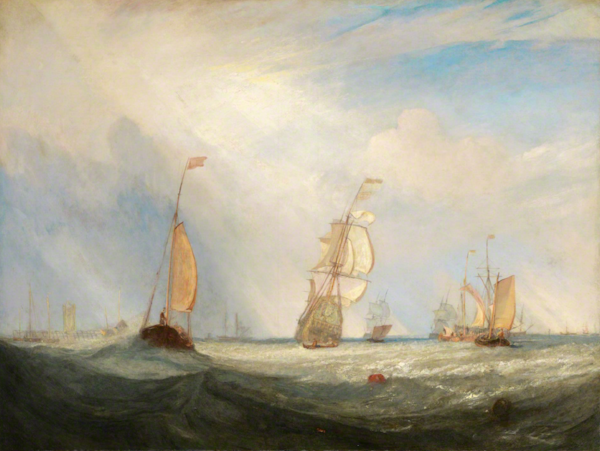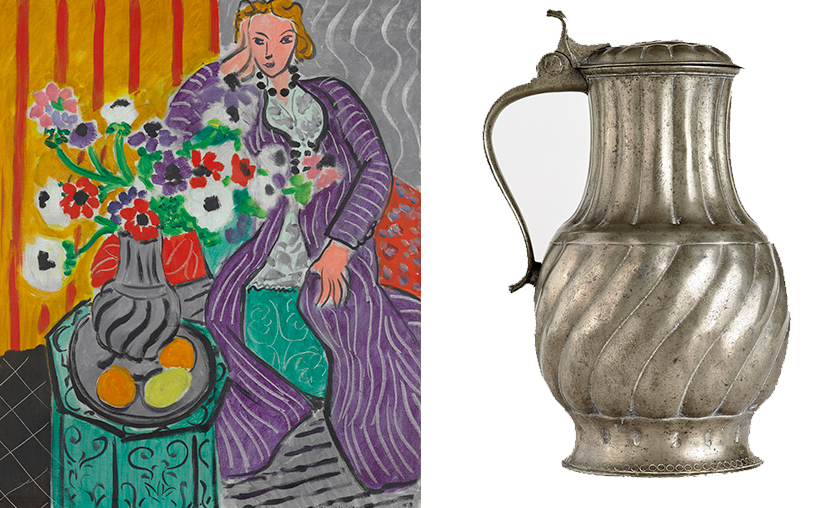Kerry James Marshall: Seeing the Unseen
Kerry James Marshall - Untitled (detail), 2009. Acrylic on PVC panel. 155.3 x 185.1 cm
Yale University Art Gallery
‘I’m always interested in doing the thing that nobody else is doing.’
Kerry James Marshall
I recently enjoyed an extensive exhibition of the art of Kerry James Marshall. (‘The Histories’ is at The Royal Academy, London until 18 January, 2026.)
'I don't believe in hope. I believe in action, if I'm an apostle of anything. There are always going to be complications, but to a large degree, everything is in your hands.’
Working mostly in acrylic, Marshall has spent a lifetime creating large-scale figurative paintings of the African American experience. Drawing on art history, he celebrates Black lives of the past and present, and reimagines a world where Black individuals and communities are central to the narrative. He strives to ensure that the hitherto unseen is seen.
'You have to recover the capacity to imagine yourself as an ideal and figure out how to project that into the world.’
Born in 1955 in Birmingham, Alabama, aged 8 Marshall moved with his family to South Central Los Angeles. He was always acutely aware of the Civil Rights struggle.
’You can't be born in Birmingham, Alabama, in 1955, and grow up in South Central near the Black Panthers’ headquarters, and not feel like you've got some kind of social responsibility.’
Marshall studied at Otis College of Art and Design in LA. He chose to pursue figurative painting at a time when abstraction was the dominant form.
‘Abstraction was supposed to be ‘advanced.’ There weren’t even any Black people who wanted to paint Black people.’
Kerry James Marshall - De Style (detail), 1993. Acrylic and collage on canvas. 264.2 x 309.9 cm. Los Angeles County Museum of Art,
A critical moment in Marshall’s early career came when he read Ralph Ellison’s 1952 novel ‘Invisible Man’. An unnamed protagonist is rendered invisible in a racially divided America, because people ‘refuse to see’ him.
'It is sometimes advantageous to be unseen, although it is most often rather wearing on the nerves.'
Ralph Ellison, ‘Invisible Man’
Inspired by Ellison’s book, Marshall created a series of works in which Black figures are set against dark backgrounds, so that they become almost invisible to the viewer. He then embarked on rewriting the American story; raising questions about Black absence from art history and the American Dream.
‘When you go to an art museum, the thing you're least likely to encounter is a picture of a Black person. When it comes to ideas about art and about beauty, the Black figure is absent.’
Marshall, who has spent much of his life in Chicago, painted scenes of everyday African American life: homes, city streets, nightclubs and art galleries; children playing in the park, customers chatting at the barbershop, lovers dancing in their bedroom
At a time when many housing projects were run down, he portrayed them positively, with flowers blooming, birds swooping, young couples promenading. He painted a contented Black family relaxing by a city lake - dressed in smart white clothes, listening to music, water-skiing, playing golf and croquet. For a public library in Chicago, he presented a group of kids mesmerised by ‘The Big Book of Knowledge’, ‘The Golden Book of Wonder’, ‘The Wonderful Book of Life.’
Kerry James Marshall - Knowledge and Wonder (detail), 1995. Oil on canvas. 294.6 x 698.5 cm
City of Chicago Public Art Program and the Chicago Public Library
'Black people occupy a space, even mundane spaces, in the most fascinating ways. Style is such an integral part of what Black people do that just walking is not a simple thing. You've got to walk with style. You've got to talk with a certain rhythm; you've got to do things with some flair. And so in the paintings I try to enact that same tendency toward the theatrical that seems to be so integral a part of the Black cultural body.'
Approaching his themes with wit and a sideways glance, Marshall makes images that are often complex and layered; uneasy and ambivalent. African Americans are seen swimming in a pool on the edge of a restricted private residence; taking a ride in a Californian theme park - thrilling, frightening, dangerous. His work is also rich in symbolism, integrating motifs from Yoruban religion and Haitian Voodoo; Black Panther slogans; the red, black and green of Marcus Garvey’s Pan-African Flag; references to the Black Star Line – the shipping company that Garvey founded to encourage economic independence for the African diaspora.
Throughout his career, Marshall has used various Black pigments to depict skin colours - Ivory Black, Mars Black and Carbon Black - mixing in other colours to render Black fully chromatic. He has rarely depicted the browns of real skin tones.
‘If you say Black, you should see Black… I tend to think having that extreme of color, that kind of Black, is amazingly beautiful...and powerful. What I was thinking to do with my image was to reclaim the image of Blackness as an emblem of power.’
Kerry James Marshall - ‘Past Times’ (1997)
Asking us to reconsider the American narrative, Marshall has created portraits of slave rebels, poets, artists, abolitionists and activists. He has addressed the Middle Passage, the Civil Rights struggle, the Black Power and Black Lives Matter movements. He has commemorated fallen heroes (‘We mourn our loss.’), questioned the legacy of George Washington and Thomas Jefferson, and challenged romantic representations of African history.
'If you're constantly being reminded of the ways in which your history and your narrative as a people were rooted in loss and decay, then you're in deep trouble. Once you make a certain kind of peace with the past, then you should be completely oriented towards speculation about the future.’
Marshall prompts us to rewrite the script: to reflect on the unseen figures in our own lives, in our communities and workplaces; the people we walk past and ignore, the assumptions we make, the fallacies we quietly condone, the injustices we sustain by our inaction.
He encourages us to set aside empty despair; to take practical, progressive steps to solving problems; to see the unseen.
'I think we need to remember... that a lot of energy was put into changing things to get us to the point where we are now. But being where we are now doesn't mean that we don't have to put in the same kind of energy to get us to a place where we ought to be.’
'Baby, baby,
You don't understand,
How much I love you, baby.
And how much I wanna be your only man.
Baby, baby, baby,
You don't have to go.
Stay a little while longer, baby.
I wanna talk to you just a little more.
I see the little tears in your eyes about to fall.
You are wondering if I'm for real.
But if you cry, I wonder why you cry.
I tell you, know why this is how I feel.
Baby, I'm for real.’
The Originals, 'Baby, I’m For Real' (A G Gaye / M Gaye)
No. 543




























